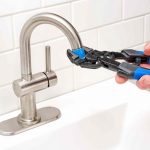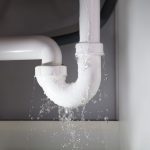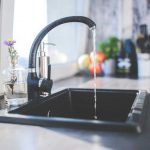You may feel helpless and annoyed when your sink is clogged with water not draining, and a counter full of dirty dishes is waiting to be cleaned.
It is easy to pick up the phone and call your trusted plumber to fix the problem, but you should know that you can also get the job done yourself.
Today, we will discuss What to do when the kitchen sink is clogged? Once you have this helpful information, you can solve the problem without the help of experts proactively.
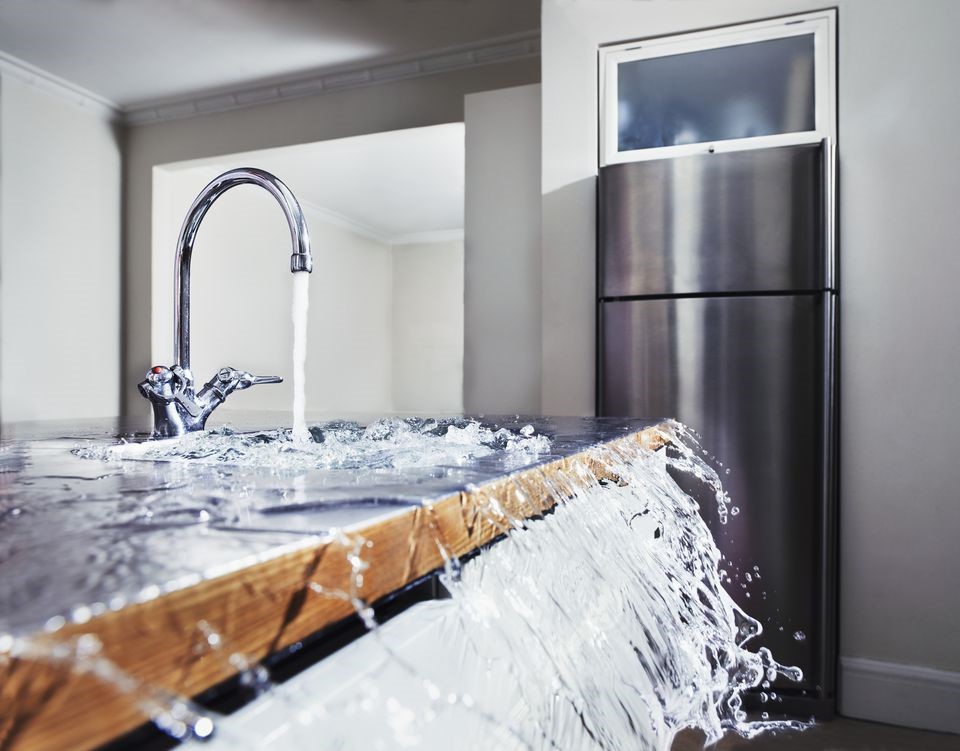
What To Do When The Kitchen Sink Is Clogged?
Once your sink gets clogged, you can try one of these tips before calling your trusted plumber.
Check Out Your Garbage Disposal
Once you detect your sink is clogged, start by unclogging your garbage disposal.
All you need to do is run the disposal for about one or two minutes using the hot water running.
If it does not help you improve the situation, ensure the disposal is disabled can carefully check it to ensure it is running correctly.
If you see the disposal is overheated and turns off automatically, it is essential to restart it at the base.
You will probably find a small red button underneath your unit. Then push it to reset your circuit breaker. After that, try rerunning your unit.
See more: How Often Should You Clean Your Kitchen Sink
Use Boiling Water
Sometimes, grease clog is the cause of the problem. In this case, you can melt it using boiling water.
Pour water into your teakettle and pot and boil it until the water boils. After that, carefully pour the boiling water into your drain.
If you notice that the water drains quickly and easily, it is a sign that you have successfully unclogged your kitchen sink. If not, you will need to wait until the water cools down before jumping to the next step.
Get a Plunger
Sometimes, using a plunger can also help you solve the problem effectively.
If your sink is of double type, you will need to use a wet rag or the stopper to block your sink’s unclogged side.
If you want to use your plunger to make a great seal, we recommend that you flush the clogged side until the water level reaches about three to four inches.
Then, use your plunger to cover your clogged sink drain and vigorously pump down and up for about half an hour or so.
So, you must stop and check if the water drains quickly and easily. If yes, you have cleared your drain.
If not, continue plunging for another half an hour. If your drain is still clogged after the second try, it’s time to move on to the next step.
Check Your Trap
If you’ve tried the above method without success, you’ll need to check for the trap, which is a U-shaped portion of the drainage pipe of your sink.
You will need to prepare one bucket or pot to catch the water and one wrench (optional) to loosen the trap’s fasteners.
Check out the U-shaped trap for blockages, and it is okay to use one coat hanger or any similar tool to take the blockage out of your pipe.
After that, rinse your trap with clean water clean in your other sink or using your garden hose. Finally, reattach your trap in the proper position.
Open your faucet to run water and see if the water drains quickly and easily.
If your kitchen sink blockage persists or your trap doesn’t have any blockages, let’s jump to the next step.
Use a Plumber’s Snake
If the steps above did not work, you might consider buying a plumber’s snake from your local hardware store.
A plumber’s snake, or an auger, is a tool that allows you to remove clogs stuck farther down your drainage system under the kitchen sink.
Start by disassembling the P-trap and drain pipe running underneath your kitchen sink to reach the “stub out” or “stub pipe.” This part usually travels behind your cabinet wall.
You will need to insert your snake into this stub pipe until feeling resistance to breaking the clog.
Get a Professional Service
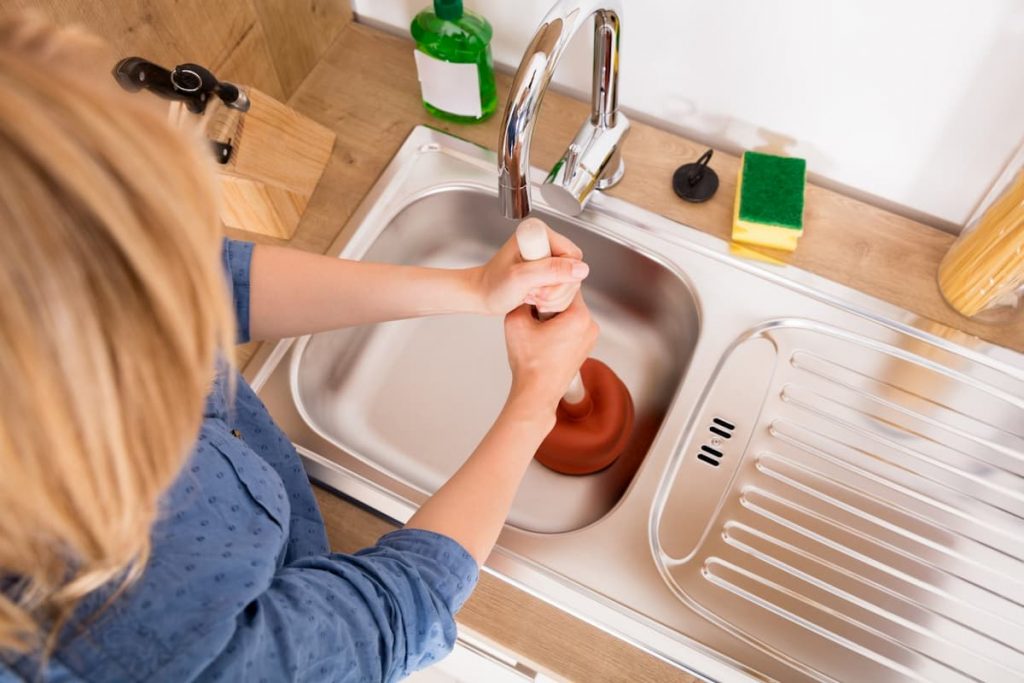
Once you have tried all of the above but cannot change the situation, your only way is to get help from a skilled professional.
It’s not hard to find a kitchen sink repair company near you. The good news is that you don’t have to spend much money to fix this situation.
Prioritize Prevention
A clogged sink can be a very annoying thing. Therefore, it is best to take some precautions to limit the possibility of such a condition occurring.
Avoid putting coffee grounds, oils, or bacon grease down the kitchen drain or in the garbage disposal. Also, you should flush plenty of water down your drain after each use.
Lastly, you should maintain your plumbing systems and components to keep everything running smoothly.
Conclusion
You’ve reached the bottom of our article. Hopefully, this article was helpful to you in unclog

